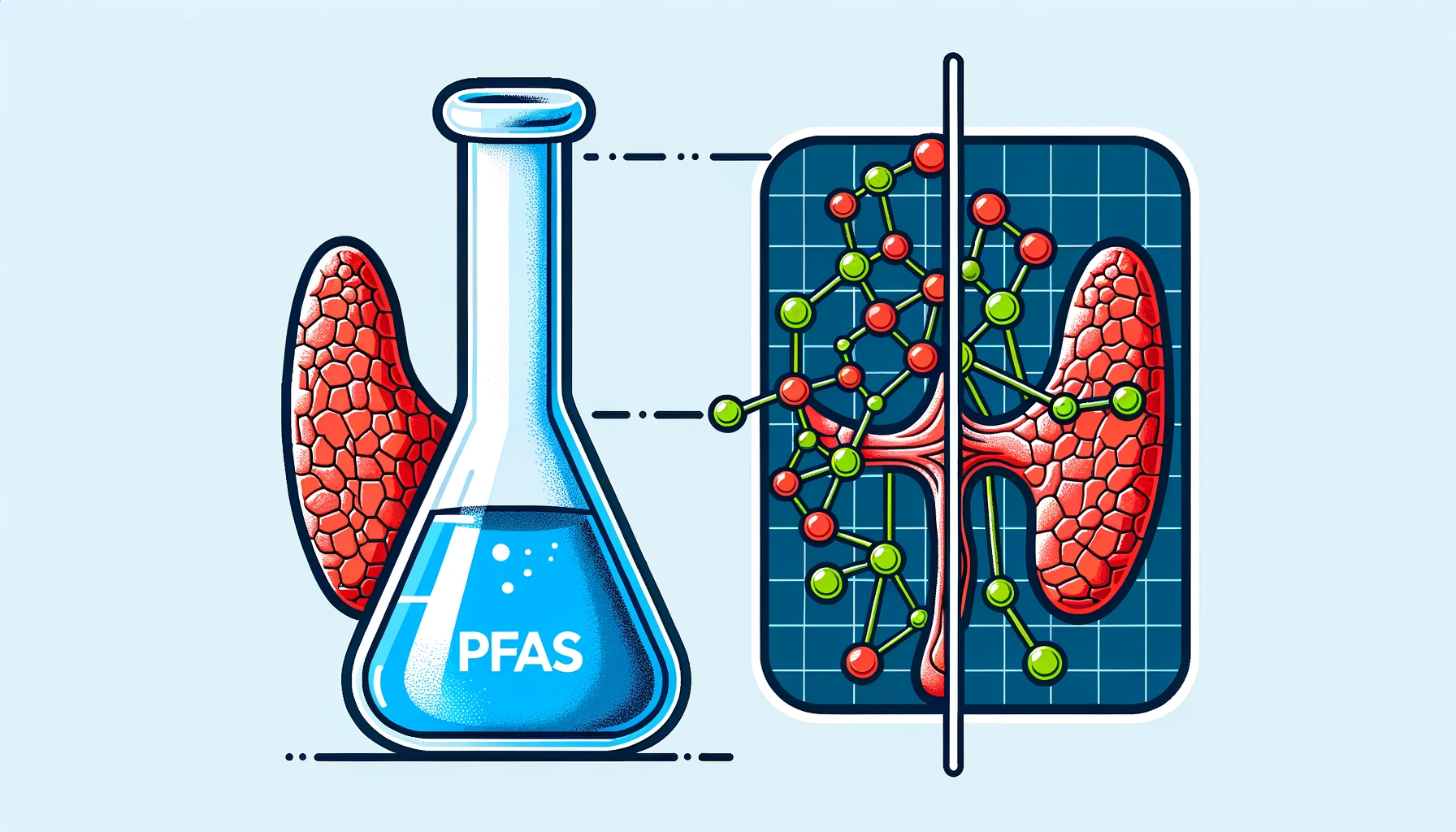A study published in the journal eBioMedicine finds that exposure to per- and polyfluoroalkyl substances can increase the risk of thyroid cancer in human populations.
Study: Per- and polyfluoroalkyl substances (PFAS) exposure and thyroid cancer risk. Image Credit: Created with the assistance of DALL·E 3
The Rising Threat of Thyroid Cancer
The global incidence and mortality rates of thyroid cancers have increased significantly in recent decades. There has been an average of 3.6% increase in thyroid cancer incidence per year in the United States between 1974 and 2013. A similar induction has been observed in China, Italy, and Turkey. Among 10 – 19-year-olds in the United States, about a 4.4% increase in the incidence rates of differentiated thyroid cancers (follicular and papillary thyroid cancers) per year has been reported between 1998 and 2013.
Endocrine-Disrupting Chemicals: A Growing Concern
Excessive exposure to endocrine-disrupting chemicals is believed to be a potential risk factor associated with increased incidence of thyroid cancers. Per- and polyfluoroalkyl substances (PFAS) are a group of endocrine-disrupting chemicals used in industries and consumer products since the 1940s.
Ubiquitous Presence of PFAS
These chemicals have highly stable chemical structures and, thus, are ubiquitously found in soil, water, and air. In addition, PFAS can be found in many consumer products (non-stick cookware, stain-resistant fabric, and firefighting foam), food products, and drinking water. Evidence indicates that perfluorooctanoic acid (PFOA) and perfluorooctane sulfonate (PFOS) are the two most widely used PFAS, and exposure to these chemicals is associated with potential health hazards.
In this study, scientists have investigated whether exposure to PFAS can increase the risk of thyroid cancers.
Study design
A total of 88 adult thyroid cancer patients with plasma samples collected at or before the cancer diagnosis were enrolled in the study. Among these patients, 74 had papillary thyroid cancer. The control study population included 88 healthy individuals who were pair-matched on age, sex, ethnicity, body mass index, smoking status, and year of sample collection.
Plasma samples collected from the patients were analyzed by liquid chromatography-high resolution mass spectrometry to detect eight types of PFAS.
Key Findings and Their Implications
The correlation analysis between PFAS exposure and thyroid cancer risk revealed a 56% induction in the rate of thyroid cancer diagnosis per doubling of linear PFOS intensity in the entire study population. However, no significant association was observed between the other seven PFAS and thyroid cancer diagnosis rate.
Considering the patients with papillary thyroid cancer, a similar positive association was observed between linear-PFOS intensity and thyroid cancer diagnosis rate.
Digging Deeper: Subgroup Analyses
A subgroup analysis investigating the impact of exposure timing on thyroid cancer diagnosis was conducted on patients who were diagnosed at least one year after the sample collection. The findings of subgroup analysis revealed that exposure to linear PFOS, branched PFOS, perfluorononanoic acid, perfluoro-octyl-phosphonic acid, and linear perfluoro-hexane-sulfonic acid can significantly increase the rate of thyroid cancer incidence.
The subgroup analysis involving thyroid cancer cases diagnosed within one year after sample collection showed a similar association only for linear PFOS but not for other PFAS tested.
Why PFAS Are Carcinogenic
The study finds that exposure to endocrine-disrupting chemicals like PFAS can increase the risk of thyroid cancers. Among various PFAS, the most potent contributors are linear PFOS, branched PFOS, perfluorononanoic acid, perfluoro-octyl-phosphonic acid, and linear perfluoro-hexane-sulfonic acid.
PFAS are considered carcinogenic because of their ability to induce epigenetic alteration, immunosuppression, oxidative stress, inflammation, and disruption of hormonal and metabolic pathways.
Persistent Risk in Drinking Water
A major source of PFOS and PFOA is water; the half-lives of these chemicals in water are 41 and 92 years, respectively. This highlights the risk of persistent exposure to potential carcinogens through contaminated drinking water, which in turn can significantly increase the risk of thyroid cancers worldwide.
Long-lasting Impact on Human Health
Furthermore, the elimination half-lives of PFOS and PFOA in humans is 3 – 7 years. This indicates that these chemicals have a long-lasting ability to disrupt signaling pathways and induce potential health hazards.
Future Directions and Gaps in Research
The study has focused mainly on PFOS, PFOA, and other long-chain PFAS, which are a small proportion of the total number of PFAS. Thus, scientists highlight the need for large-scale prospective studies to investigate the impact of exposure to additional PFAS on thyroid cancer risk.
